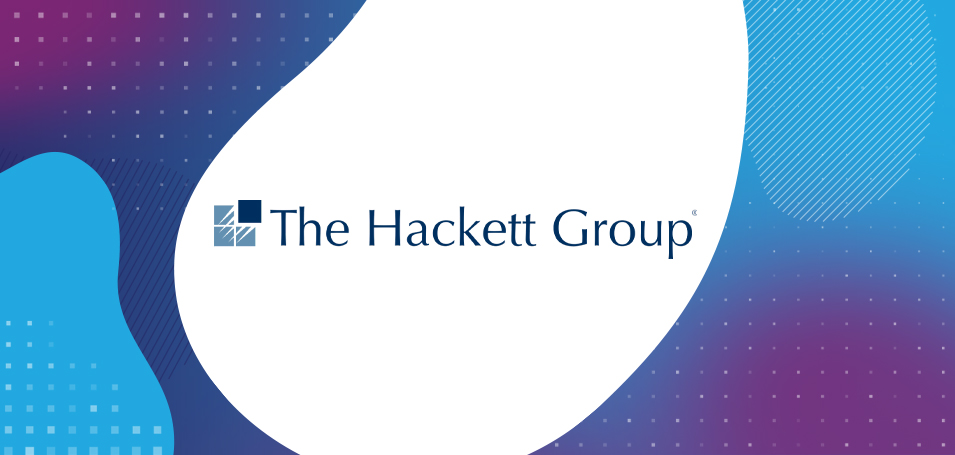Marketing and pricing your learning content is often seen as a separate task from the creation of educational content, perhaps handed over to the marketing or sales teams, or tacked on to your learning content strategy after the fact. However, if you’re not thinking about how you’re going to market and price your learning content at the earliest possible stages, you’re risking doing all that hard work for nothing. Creating effective learning content takes a lot of resources, and there are many elements involved in making it interactive, engaging, and effective. In fact, according to research from the Chapman Alliance, even rapid development of simple eLearning starts at about 50 hours of work for a single hour of content.
To make all of that effort worthwhile, companies need a focused plan on how to market, price, and sell their learning content. To discuss the roadmap to this challenge, our own CEO, Barry Kelly, sat down with CEO and lead analyst of Talented Learning, John Leh. If you missed the live event, consider this your highlight reel!
What are the six pillars of marketing and pricing learning content?
Before you can even get learner number one in the door, it’s important to think about the foundational growth work that you need to do. This particular framework is split into six key pillars and will help you to increase your margins and extend the profitability of learning at scale. Let’s dive in.
1. Defining your learning content format
There are a few different types of content formats that you want to think about when you’re creating learning content. An online course for example can come in many forms, all made to create that compelling learning experience when you’re not training face to face. It could involve a live chat or a webinar with self-paced learning to augment that, or it could be completely asynchronous, where learners will move through the content alone with feedback to help them stay on track, either from an instructor or from peers. There’s also micro-learning plus, which is short learning that could come in the form of articles or videos that are standalone. A huge 85% of our webinar audience, as indicated by our poll, were relying on self-paced learning.
Other learning content options might be virtual events, certifications, live training, in-product learning on a device, on a piece of machinery or in a software application. The main thing is to determine the format that is most appropriate for the learning outcomes you hope to achieve: that’s a really essential first step.
2. Packaging your learning content
Barry shared his insights on learning content packaging,
“If I look across the organizations that I’ve worked with, across our customer base, the ones that are most successful have diversity in learning content offerings.”
This is about considering the audience of your learning content, how consumable it is, and how to engage the user. Additionally, will it be delivered by an industry expert, included as a bundle with other learning, created as part of a subscription, or will it be standalone?
At this point, it’s time to think about whether you’re going to be offering free content. This can be a great way to get someone interested in learning content, perhaps in exchange for an email address or contact details. In some cases, all your training content will be free, especially if you have other business drivers involved such as customer retention.
Next, you might have an à la carte offering, where users can opt into single paid courses. Ideally, to maximize profits, you want to work towards having bundled learning. This could be certifications to learn a specific skill, or it could even be simply putting individual pieces of content together, adding a discount, and promoting the offer to help you to monetize or sell at scale.
At Talented Learning, Leh uses free, registration-based learning content, and then proceeds to move onto bundles of premium content, to get customers to sign up for subscriptions. The free steps are used as a way to make that leap.
3. Pricing your learning content
To work out how much you’re going to charge, you need to think about the value of the learning content you’ve created. Part of that is the outcome, the change in behavior that you’re providing. Ask yourself: How valuable is the credential or the skills? You also need to think about the availability of your learning content offering. Where else can the customer get this industry knowledge, or this level of accuracy, or this amount of detail? Is it a niche offering, or can they get it from YouTube or find the same information easily with a quick Google search?
You will also need to think about the experience you’re offering. As Barry mentioned,
“You can’t show someone a two-hour video and charge them $4,000 for it!”
However, an in-person workshop that’s more interactive or niche might well factor in that price bracket for a similar amount of learning. There is some crossover between the pillars here. For example, you might also be able to price higher because of the package that your learning content comes in. Are you teaching something in an accelerated way? In a world where time = money, this is extremely valuable.
4. Selling or merchandising your learning content
When it comes to merchandising, we’re talking about exactly who will sell your learning experience, as well as how this learning content will be sold. For a B2B software product, this may be via a sales team, but how will they be trained, and what will their product marketing strategy be? This is where you think about the training materials that they will need to sell your education, and how that may need to be differentiated for various customer segments.
When it comes to self-paced learning or self-initiated sales, merchandising should also be considered early in your strategy. How will you sell or communicate the value of your learning from your website or your mobile app? Another element of this is understanding what the learning content experience is meant to be, and how it will be presented. This is really essential, because 10 salespeople can be given the same product, and they will all sell it a different way, and 10 learners can be given learning content, and they will all experience it in a different way.
5. Marketing your learning content to gain sales
The last stage of your learning content plan should look at how you’re going to drive learners to find and utilize your customer education or professional training content. Start by thinking about the channels that you have and what’s available to you. This could be anything from paid advertising through Google or LinkedIn, to media spots for thought leadership. Don’t forget the value of pushing out regular content from your own website or social media that will help to boost SEO, as well as creating a solid email marketing strategy. Email marketing is a really important tool that helps you to continuously optimize drip campaigns and communicate value.
But how do you know what to communicate to market your learning content?
6. Communicating the value of your learning content
One great way to think about this, and to hone in on the value of what you’re offering is to think about the following equation: Experience + Outcomes = Value. When you’re looking at how to market your learning content, this equation really helps us to zero in on how to provide and present value, with all 5 of these pillars in mind of course. After all, thinking about outcomes is a great start, but it’s not enough by itself. There are a number of ways to get to the outcome you’re looking for, providing this learning to your customers. You could do this via 450 quiz questions, or 100 PowerPoint slides, but in this hyper-competitive world, the learning experience is everything.
This means that you really need to think about the experience that you’re providing your learners, especially if you’re looking to get subscriptions and recurring revenues. Your goal should be to create a compelling learning experience, to inspire individuals to learn, and to create something that your learners want to tell their friends about.
Believe it or not, we’ve just scratched the surface of this awesome webinar! The full conversation includes:
- The metrics for missing value: Hint – it’s hidden between those who engage with your learning content and those who do not.
- Extending merchandising: How to utilize promo videos, samples, reviews, feedback, CTAs, and more.
- Maximizing free content: How to find a balance of free and paid activities that markets your learning content in an optimal way.
Watch the webinar on-demand, here!




